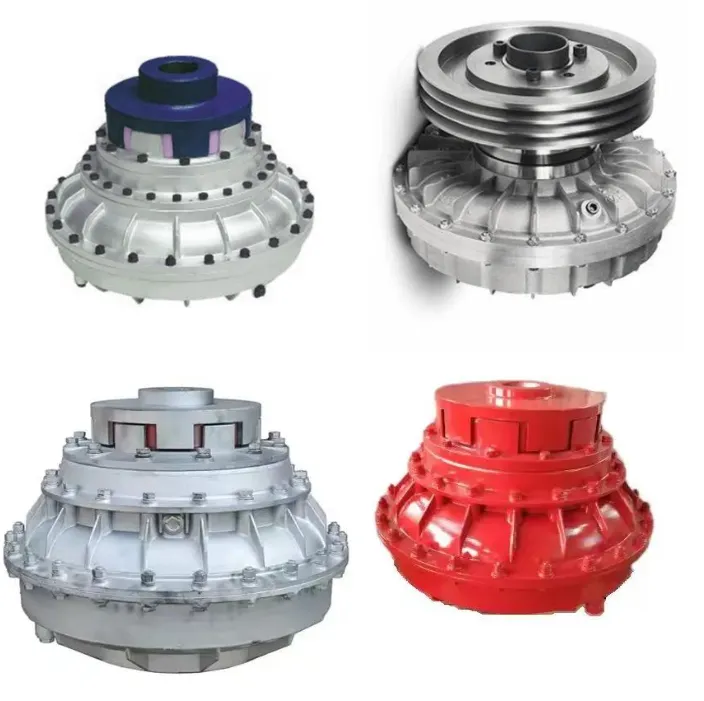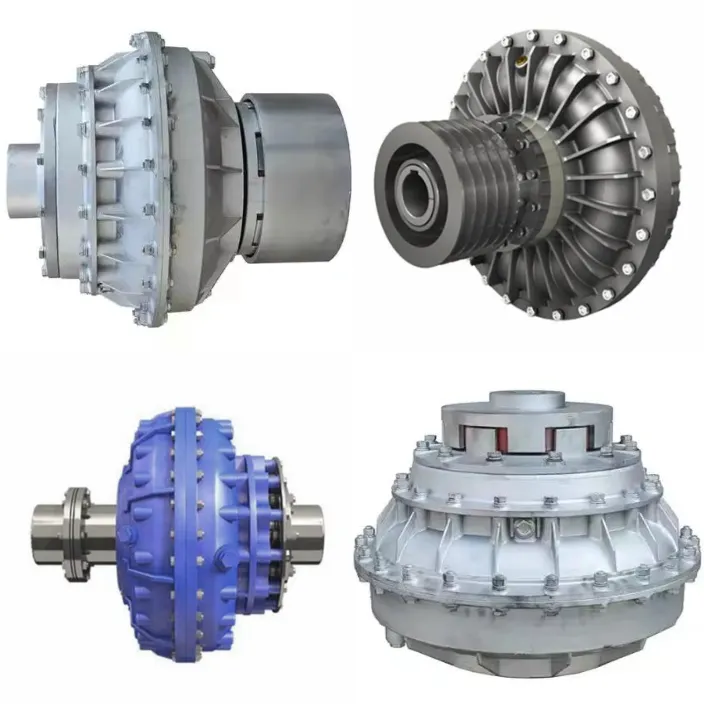Hydraulic Quick Release Coupling
Introduction to Hydraulic Quick Release Couplings
Hydraulic quick release couplings are essential components in hydraulic systems, allowing for the rapid connection and disconnection of fluid lines without the need for tools. These couplings ensure efficient and leak-free operation, making them a preferred choice in various industrial applications.
Historical Development of Hydraulic Couplings
Hydraulic couplings have evolved significantly since their inception. Initially, they were bulky and prone to leakage, but advancements in materials science and engineering have led to the development of more compact and reliable designs.
Types of Hydraulic Quick Release Couplings
There are various types of hydraulic quick release couplings, each designed for specific applications. Common types include push-to-connect, threaded, and flat face couplings, each offering distinct advantages in terms of ease of use, connection integrity, and resistance to contamination.
Applications of Hydraulic Quick Release Couplings
These couplings are widely used in industries such as construction, agriculture, manufacturing, and transportation. They facilitate the efficient operation of machinery by enabling quick changes in hydraulic lines, minimizing downtime.
Materials Used in Hydraulic Couplings
The choice of materials is crucial for the performance of hydraulic couplings. Common materials include stainless steel, brass, and thermoplastic, chosen for their durability, resistance to corrosion, and compatibility with hydraulic fluids.
Key Features of Hydraulic Quick Release Couplings
Hydraulic quick release couplings are designed with features such as non-spill mechanisms, high-pressure ratings, and robust locking systems to ensure safe and reliable operation.
Advantages of Using Hydraulic Couplings
The primary advantages include reduced downtime, ease of maintenance, enhanced safety, and improved system efficiency. These benefits make hydraulic quick release couplings indispensable in modern hydraulic systems.
Installation and Maintenance Tips
Proper installation and regular maintenance are vital for the optimal performance of hydraulic couplings. Ensuring clean connections, correct alignment, and timely replacement of worn components can significantly prolong the life of the couplings.
Common Challenges and Solutions
Despite their benefits, hydraulic quick release couplings can face issues such as leakage, contamination, and wear. Implementing best practices in handling and maintenance can mitigate these challenges.
Innovations in Hydraulic Coupling Technology
Recent innovations include the development of zero-leak couplings, high-temperature resistant materials, and smart couplings with integrated sensors for real-time monitoring. These advancements are pushing the boundaries of what hydraulic couplings can achieve.
Sustainability and Environmental Impact
Hydraulic quick release couplings contribute to sustainability by reducing fluid waste and enabling the use of environmentally friendly hydraulic fluids. Manufacturers are also focusing on recyclable materials and eco-friendly production processes.
Industry Standards and Certifications
Compliance with industry standards such as ISO 7241 ensures the reliability and safety of hydraulic quick release couplings. Certifications from recognized bodies further validate the quality and performance of these products.
Future Trends in Hydraulic Couplings
The future of hydraulic couplings lies in increased automation, enhanced durability, and integration with advanced hydraulic systems. The adoption of smart technologies will likely play a significant role in the evolution of hydraulic couplings.
Case Studies and Real-World Examples
Exploring case studies where hydraulic quick release couplings have solved complex problems in real-world applications can provide valuable insights into their practical benefits and performance.
Choosing the Right Hydraulic Quick Release Coupling
Selecting the appropriate coupling involves considering factors such as fluid compatibility, pressure requirements, and environmental conditions. Understanding these parameters ensures the optimal performance and longevity of the coupling.
Conclusion
Hydraulic quick release couplings are critical components in hydraulic systems, offering numerous benefits and ensuring efficient and reliable operation. Continuous advancements in technology promise even greater improvements in the future.

What is the function of hydraulic coupler?
The primary functions of a hydraulic coupler are:

- Connect and disconnect fluid lines: Allows for quick and easy connection and disconnection of hydraulic lines without fluid leakage.
- Maintain system pressure: Ensures that the hydraulic system maintains appropriate pressure levels for optimal performance.
- Prevent contamination: Designed to prevent the ingress of contaminants into the hydraulic system during connection and disconnection.
- Enhance safety: Reduces the risk of accidents by providing secure and reliable connections that are resistant to accidental disconnections.
What are the two types of fluid coupling?
The two main types of fluid couplings are:

- Constant-fill fluid coupling: This type of coupling contains a fixed amount of fluid, which transfers torque through hydraulic shear forces. It is commonly used in applications requiring smooth start-up and overload protection.
- Variable-fill fluid coupling: This type allows the fluid level to be adjusted, providing variable torque transmission. It is ideal for applications requiring flexible control over power transmission, such as in conveyors and crushers.
How do hydraulic quick couplers work?
Hydraulic quick couplers work by:
- Push-to-connect mechanism: Allows for easy and rapid connection of hydraulic lines by simply pushing the coupler halves together.
- Locking mechanism: Ensures a secure connection by locking the coupler halves in place, preventing accidental disconnection.
- Sealing elements: Integrated seals prevent fluid leakage during connection and disconnection, maintaining system integrity.
- Pressure valves: Integrated pressure valves manage the hydraulic fluid flow, ensuring consistent pressure and preventing system damage.
How to select or customize the right hydraulic coupling
When selecting or customizing a hydraulic coupling, consider the following parameters:

- Fluid compatibility: Ensure the coupling materials are compatible with the hydraulic fluid, preventing degradation and maintaining performance.
- Pressure rating: Choose a coupling that can withstand the system’s maximum pressure to ensure safety and reliability.
- Temperature range: Consider the operating temperature range to select materials that can handle the thermal stresses without failure.
- Environmental conditions: Assess the working environment, including exposure to chemicals, moisture, and dust, to select a suitable coupling design.
- Connection type: Determine the appropriate connection type (e.g., push-to-connect, threaded) based on the application requirements for ease of use and reliability.
HZPT – Your Trusted Manufacturer for Hydraulic Couplings
HZPT, established in 2006, is a leading manufacturer specializing in the development and production of high-precision couplings, ball screw support units, motor mounts, and motion modules. Our coupling product line includes servo motor couplings, stepper motor couplings, miniature motor couplings, and encoder couplings, among others.
Advantages of HZPT:
- Advanced Technology: We leverage cutting-edge technology in our manufacturing processes, ensuring high precision and durability of our products.
- In-house R&D Center: Our dedicated research and development center allows us to innovate and improve our products continuously.
- Comprehensive Processing and Testing Systems: We maintain rigorous quality control with our in-house processing and testing systems, ensuring every product meets the highest standards.
- ISO 9001:2015 Certification: Our commitment to quality is validated by our ISO 9001:2015 certification, ensuring consistent and reliable product performance.
- ROHS Compliance: Our products comply with ROHS standards, underscoring our commitment to environmental sustainability and safety.
Currently, we offer over 30 product lines, widely applied in high-precision connections and various automated machinery in industries such as electronics, solar energy, photovoltaics, machine tools, packaging, molds, medical, and printing. Our products are recognized and widely used by top customers globally, including in Japan, the USA, Germany, Israel, Malaysia, Singapore, and Taiwan.
Choose HZPT for your hydraulic coupling needs and experience unparalleled quality and performance. Partner with us and benefit from our advanced technology, stringent quality control, and dedication to customer satisfaction.